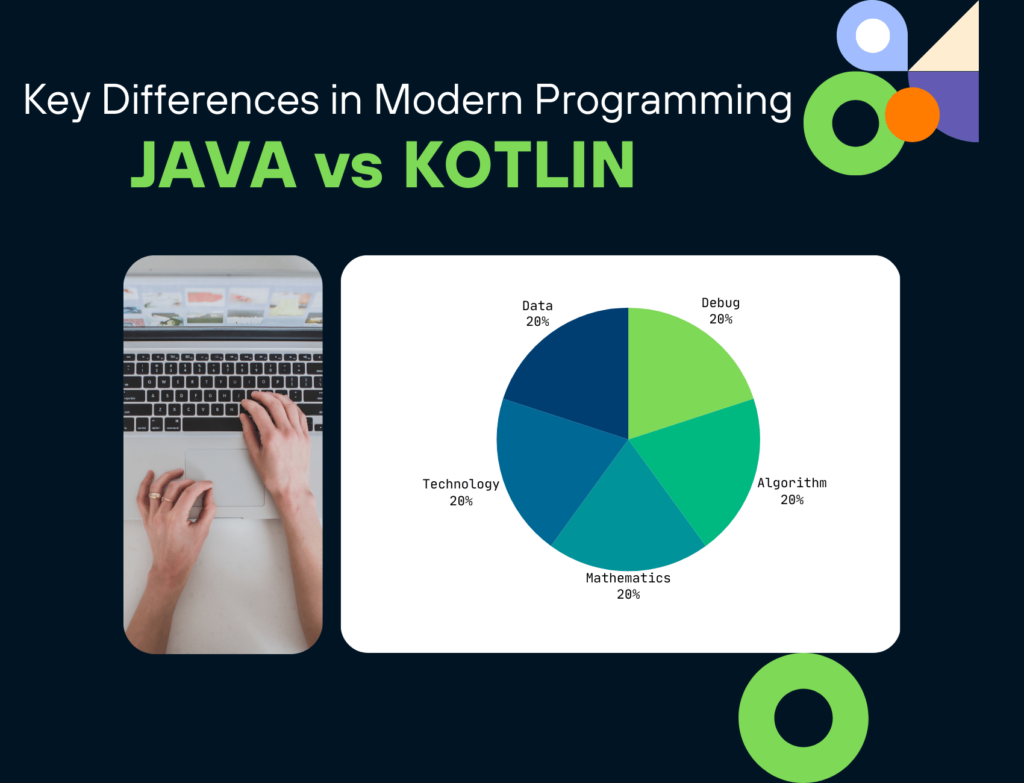
In the ever-evolving landscape of software development, choosing the right programming language is paramount. Among the myriad of options available, Java and Kotlin stand out as two prominent languages, each with its own set of strengths and weaknesses. While Java has been a staple in the industry for decades, Kotlin has emerged as a formidable contender in recent years, gaining popularity for its modern features and seamless integration with existing Java codebases. In this blog post, we’ll delve into the key differences between Java and Kotlin to help you make an informed decision for your next project.
Syntax and Conciseness:
Java, with its verbose syntax, often requires more lines of code to accomplish tasks compared to Kotlin. Kotlin, on the other hand, boasts a more concise and expressive syntax, allowing developers to write cleaner and more readable code. Features such as type inference, data classes, and extension functions contribute to Kotlin’s brevity, making it a favorite among developers seeking productivity and maintainability.
Null Safety:
One of the most notorious pitfalls in Java programming is the dreaded NullPointerException (NPE). Kotlin addresses this issue head-on by introducing null safety at the language level. With Kotlin’s nullable and non-nullable types, developers can effectively eliminate NPEs and write safer code. This feature not only enhances code reliability but also reduces debugging time, ultimately leading to a more robust application.
Interoperability:
Kotlin boasts seamless interoperability with Java, allowing developers to leverage existing Java libraries and frameworks without any hassle. This means you can gradually migrate your codebase from Java to Kotlin or even use them interchangeably within the same project. This interoperability is facilitated by Kotlin’s compatibility with Java bytecode, making it an ideal choice for teams looking to modernize their applications incrementally.
Functional Programming:
While Java has embraced functional programming paradigms in recent years with the introduction of features like lambdas and streams, Kotlin takes it a step further by providing first-class support for functional programming concepts. With features such as higher-order functions, function types, and immutable data structures, Kotlin empowers developers to write more concise and expressive code, especially when dealing with complex transformations and operations.
Tooling and Community Support:
Java benefits from a mature ecosystem with extensive tooling support and a vast community of developers. Kotlin, although relatively newer, has been rapidly gaining traction within the industry, thanks to strong backing from JetBrains and official support from Google for Android development. With dedicated IDE plugins, comprehensive documentation, and active community forums, Kotlin offers a robust ecosystem that continues to grow and evolve.
Learning Curve:
For developers familiar with Java, transitioning to Kotlin is relatively seamless, as the two languages share many similarities in syntax and semantics. However, Kotlin introduces several modern language features and concepts that may require a learning curve for those new to functional programming or null safety. Nevertheless, the benefits of adopting Kotlin often outweigh the initial learning investment, especially in terms of developer productivity and code quality.
In conclusion, both Java and Kotlin are powerful languages with their own unique strengths and use cases. While Java remains a solid choice for building enterprise-scale applications and maintaining legacy systems, Kotlin offers modern features and enhancements that can significantly improve developer productivity and code quality. Ultimately, the decision between Java and Kotlin depends on factors such as project requirements, team expertise, and long-term goals. By understanding the differences outlined in this blog post, you’ll be better equipped to make an informed choice for your next programming endeavor.